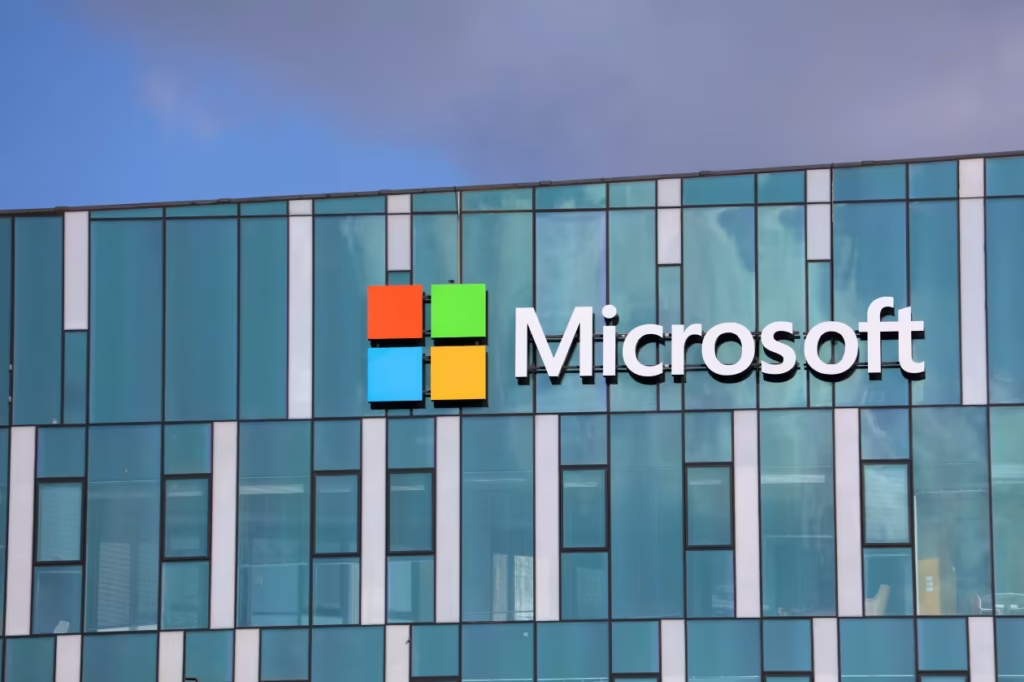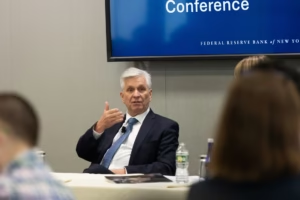Oracle and Microsoft have significantly expanded their usage of financing leasing, and Amazon and Meta are doing the same.
The actual amount is far greater than the headline figures indicate, but big tech corporations are on course to invest hundreds of billions of dollars this year to develop artificial intelligence infrastructure.
Businesses like Oracle Corp. (ORCL) and Microsoft Corp. (MSFT) are increasingly using financing leases, an accounting trick, to invest billions more in data centers without it being shown in their regular capital-expenditure calculations.
A company’s free cash flow, or the amount of money left over after operating costs and capital expenditures are paid, suffers when it makes an upfront asset purchase. Due to significant AI capital expenditures, Oracle, Amazon.com Inc. (AMZN), Meta Platforms Inc. (META), and Alphabet Inc. (GOOGL) have all seen annual decreases in free cash flow, which means they have less money available to distribute to shareholders in the form of dividends or stock buybacks.
Using finance leases might help Big Tech businesses avoid the significant free-cash-flow impact throughout a long investment cycle. A financing lease makes the transaction economically comparable to buying an asset with debt by shifting ownership risks and benefits to the lessee. The business makes lease payments for the duration of the lease, and no cash is spent up front when the finance lease is first recognized.
Microsoft and Oracle are two hyperscalers that have been using finance leases more frequently to finance AI buildouts. Microsoft’s overall finance-lease liabilities in fiscal year 2025 were $46.2 billion, up 70% from $27.1 billion in the year before. In its most recent August quarter, Oracle reported $4 billion in finance-lease obligations, a substantial increase over the same period last year when it had no balance.
For Oracle, lease financing is a very alluring choice. Todd Castagno, global valuation, accounting, and tax strategist at Morgan Stanley, recently wrote that consensus adjustments for Oracle’s capital expenditures have increased by 180% from a year earlier.
In the upcoming years, the business will have to rapidly expand its AI infrastructure, particularly in view of Oracle’s rumored $300 billion alliance with OpenAI. However, with $362 million in negative free cash flow in its most recent quarter, Oracle is already spending more money than it is making. Oracle’s free cash flow may continue to decrease if its capital expenditures exceed its operating cash flows. Oracle may expand its data centers without having to make significant upfront financial outlays by utilizing finance leases.
Finance leases will play a bigger role in the future of the AI industry as capital expenditure levels continue to climb in the upcoming quarters. When regular capital expenditures and finance leases are combined, it becomes clear that hyperscalers’ capital expenditures are more intense than investors might anticipate. Additionally, it makes it easier to compare hyperscalers that lease with those who purchase their data centers entirely.
Morgan Stanley believes that when finance leases are taken into account, Microsoft’s capex-to-sales ratio rose from 28% to 38% in fiscal year 2026. Over the same time span, Oracle’s capital expenditures to sales ratio grew from 41% to 58%.
More hyperscalers are beginning to use financing leases at a time when the capital-intensity levels of Google, Microsoft, Oracle, and Meta have increased to their greatest levels since their first public offerings. Amazon has changed its strategy and started committing to new leases after previously moving away from finance leasing in favor of asset ownership. For its most recent July quarter, the corporation reported $937 million in property and equipment purchased through finance leases, a significant increase from the $181 million spent during the same period the previous year.
Furthermore, Amazon and Meta have been expanding the number of contracted leases that have not yet begun, or lease commitments. Data centers and networking accounted for the majority of Meta’s $52.6 billion in operating and finance lease commitments for the most recent July quarter. Compared to the $6.2 billion in operating lease agreements that Meta disclosed a year ago, that represents a significant increase.
These businesses will start to pay the related costs as soon as these leases start and the assets are put to use.





